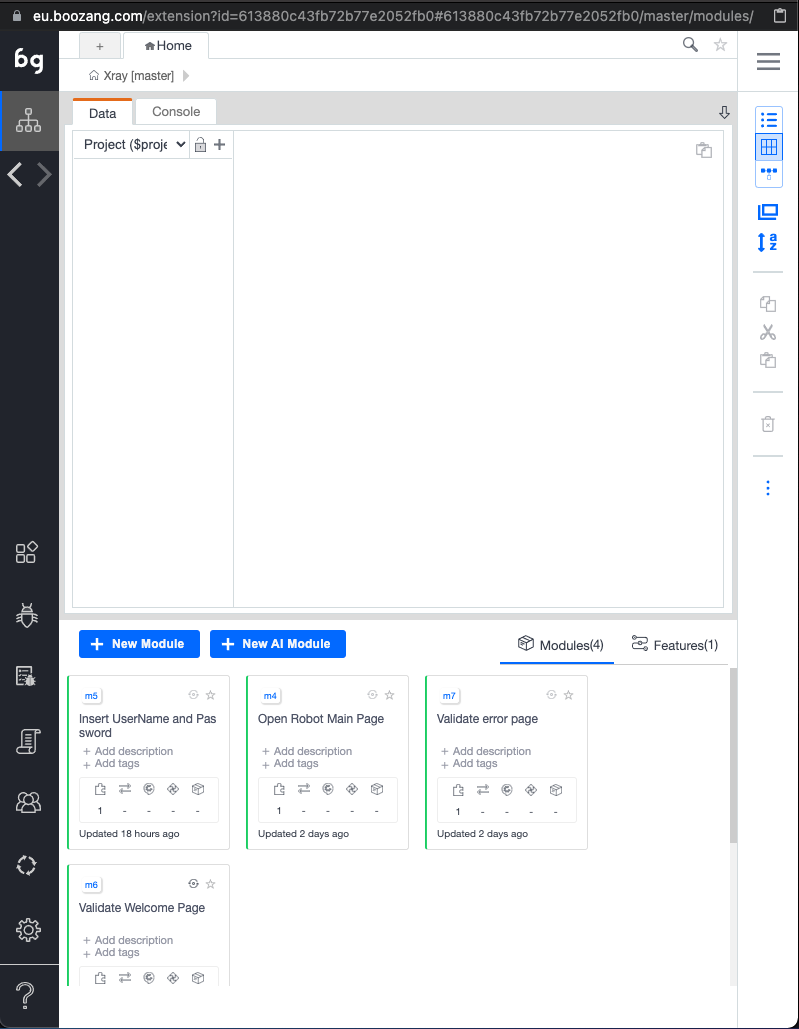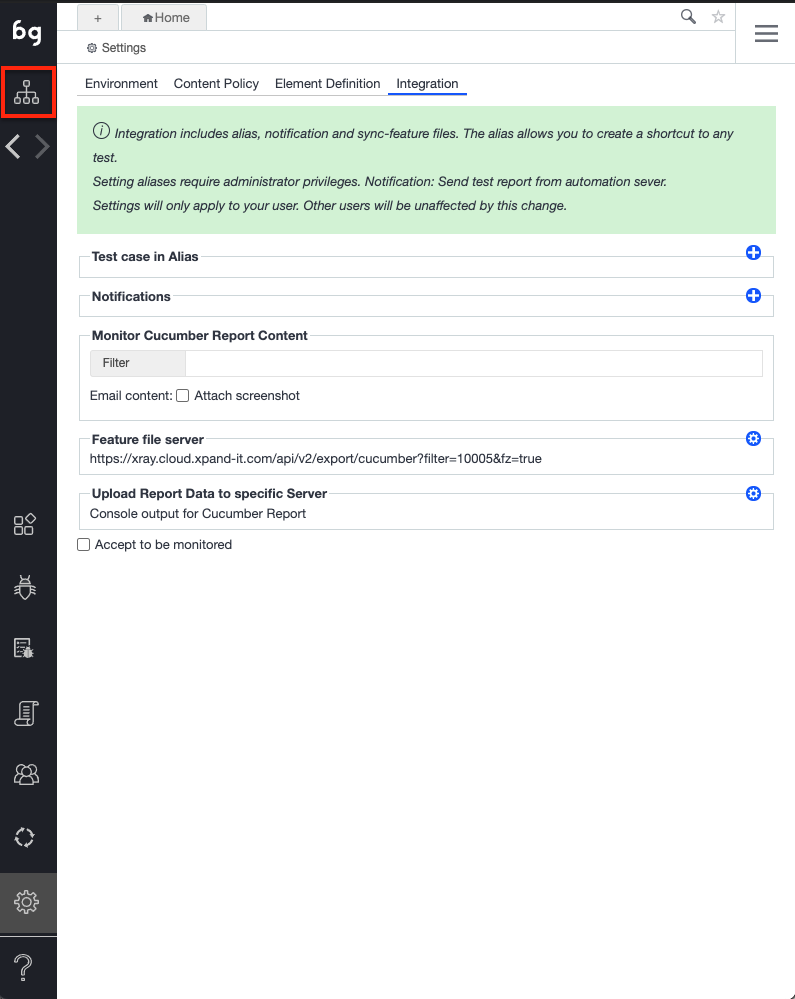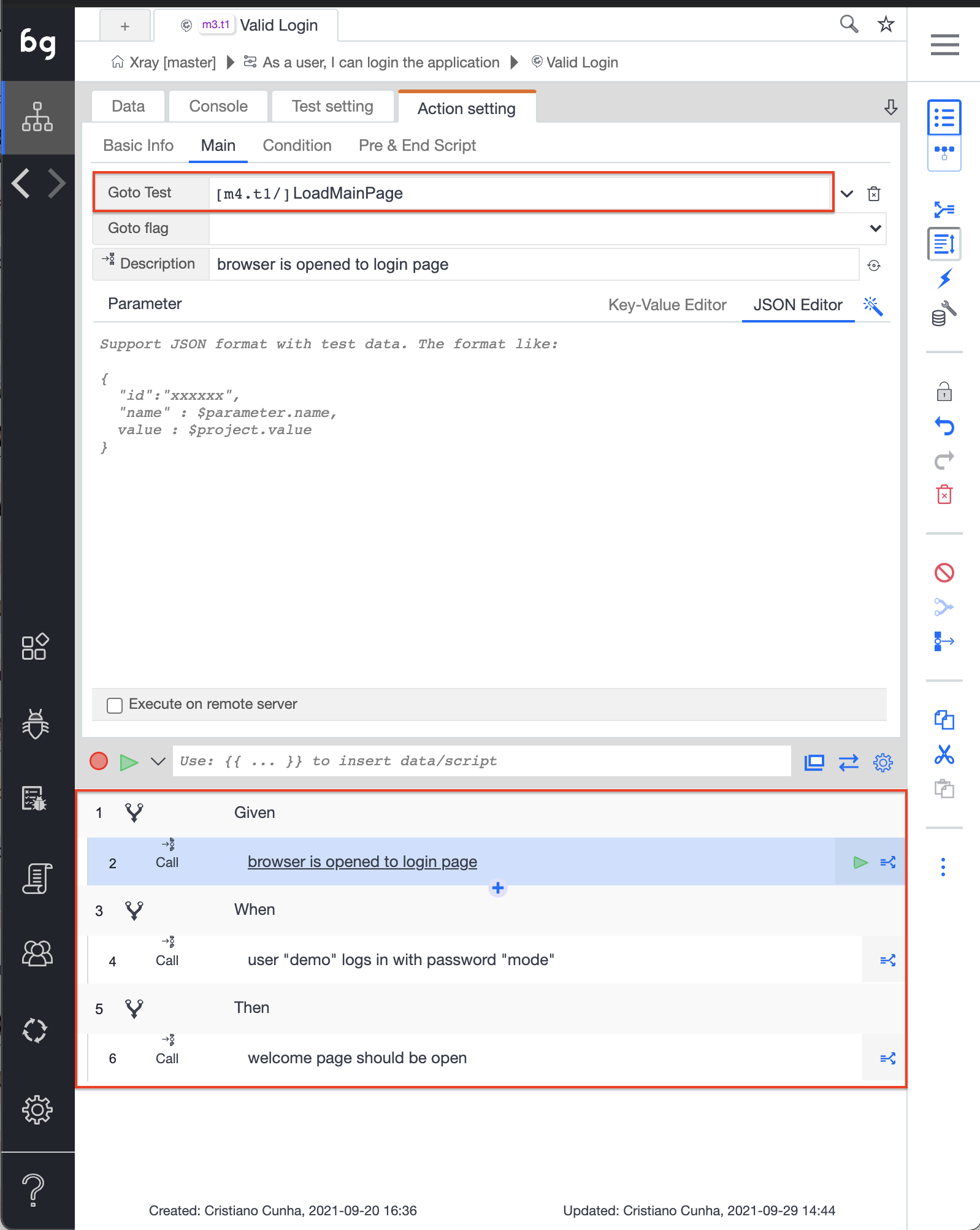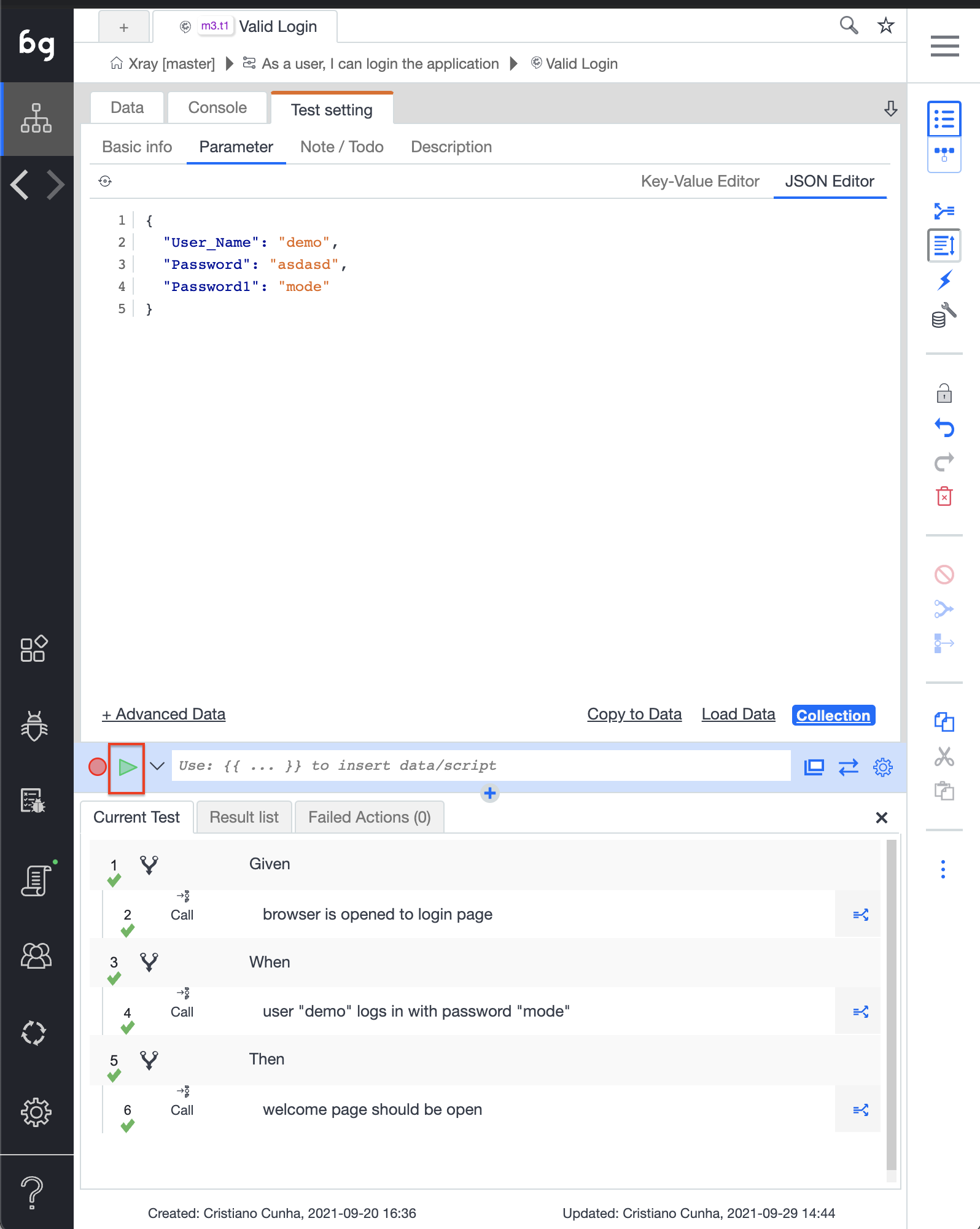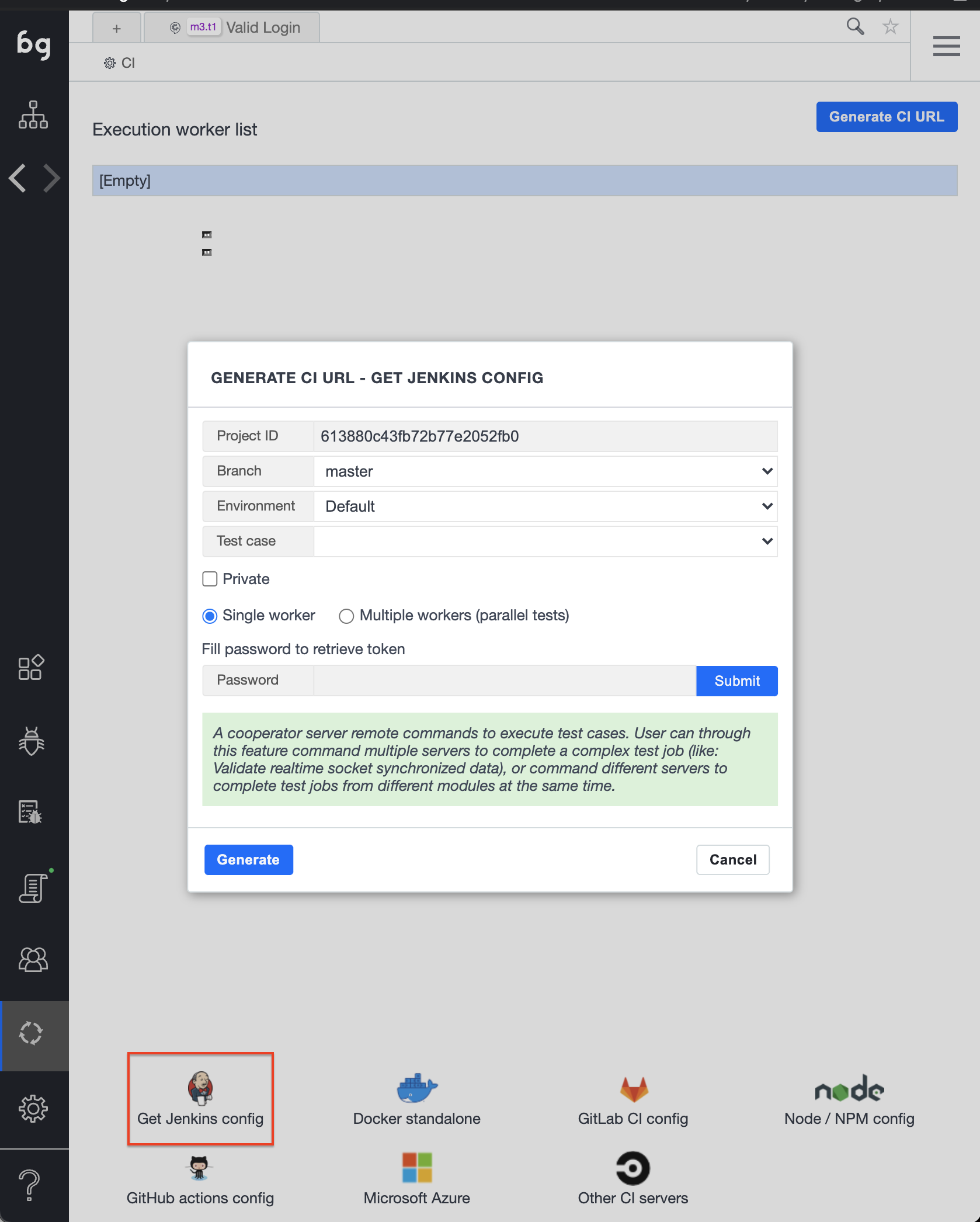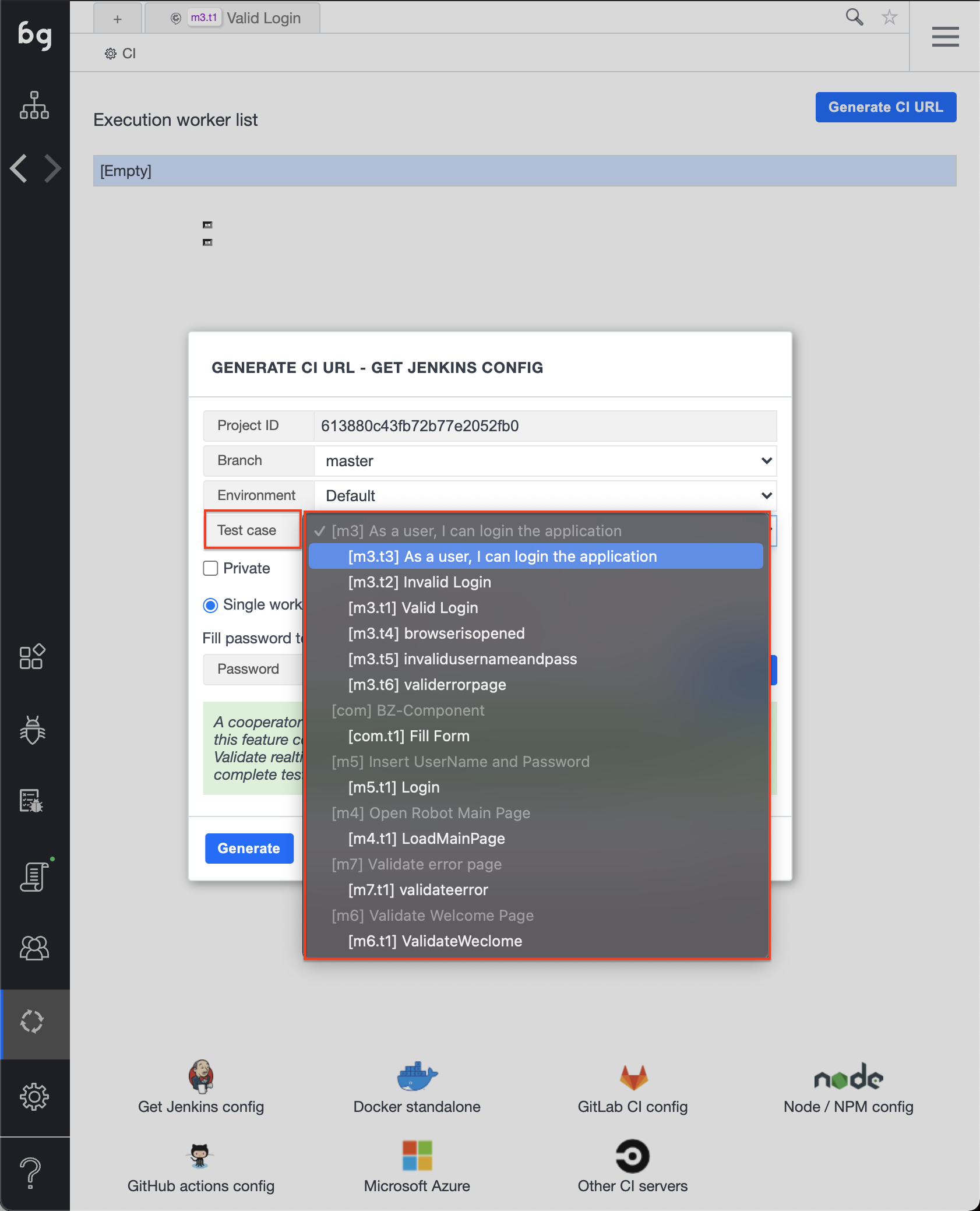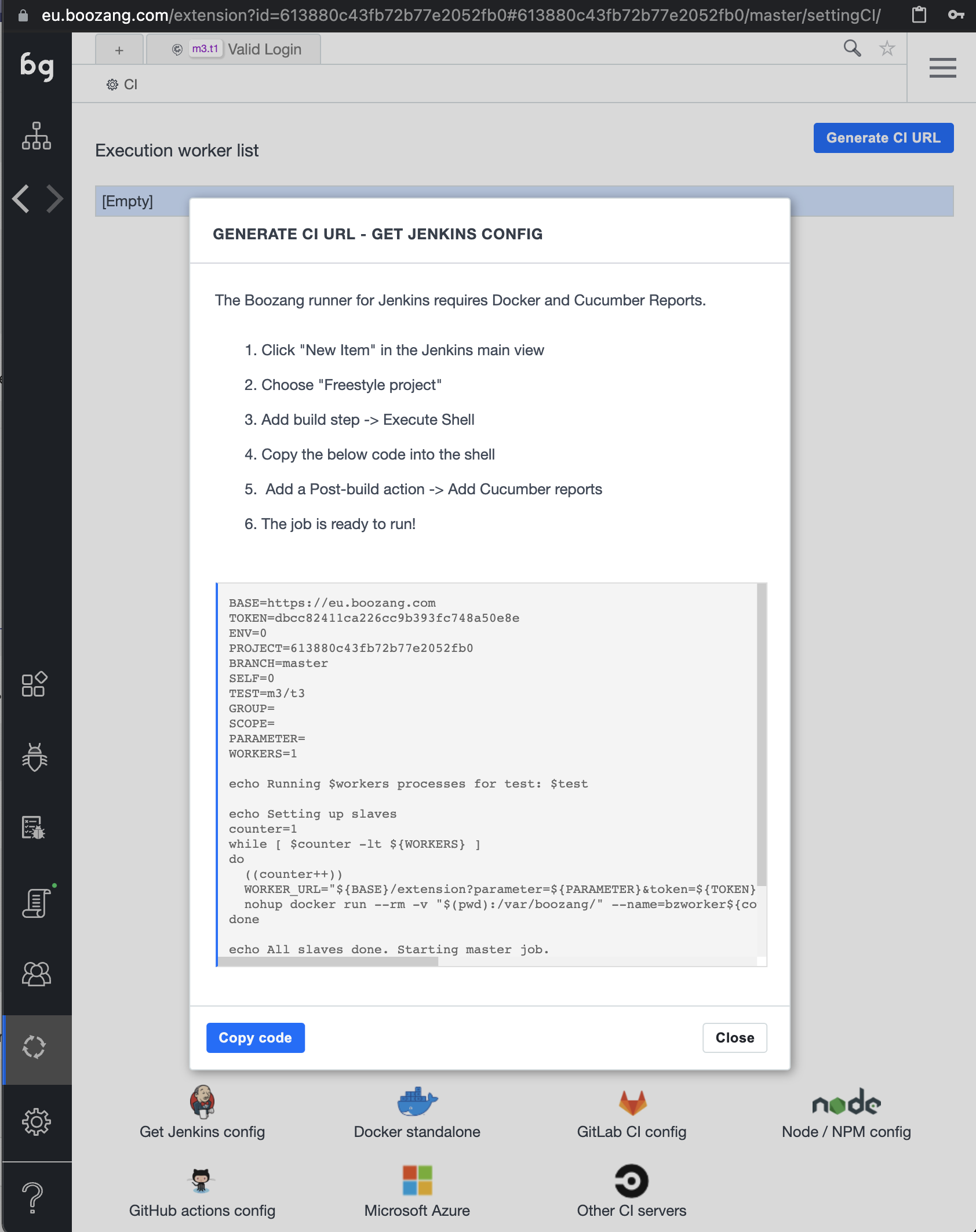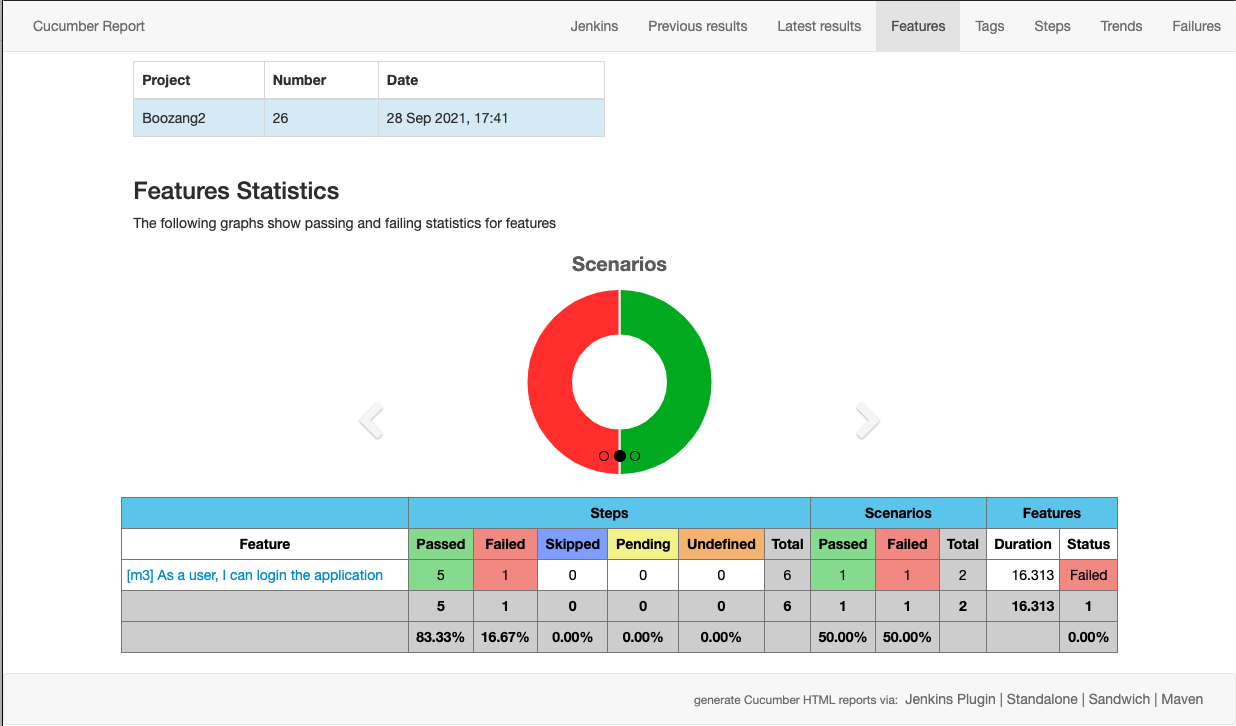Page History
...
Access Boozang (we are using the Europe region but use the one that makes sense for you) and create a new project where we will create our test automation, in my case I created the Xray project, next I will open the Boozang tool by pressing in the "Launch Tool" option:
This will open the tool (actually the first time you press this option it will take you to the installation option of the Boozang AI Chrome extension, after you have installed it, it will open the tool right away)
In order to configure the integration with Xray we must access the main page and select the configuration option in the bottom left and then configure the Feature File Server by pressing the configuration icon next to it
This will open a pop up to configure the different integrations available in Boozang, in our case we are going to choose the "Jira/Xray" option
...
Now get back to the main page of Boozang application by pressing the first option in the left menu
Import Xray Cucumber Tests into Boozang
Now that the configuration is set we will export the Cucumber tests from Xray and import them into Boozang, to do so use the option in the right menu (as shown in the screenshot below) and choose "Import Features" option in the pop up that appears
Another pop up will appear to choose the import type, in our case we will choose "Sync from server" and press Load
At this stage Boozang will connect to Xray and list all the requirements that are covered by the Cucumber tests present in the filter you have provided, in my case my two Cucumber Tests are covering the XT-45 User Story
...
So in the pop up it will show a preview of what is the requirement from where it will import the Tests from
When we press "Start" Boozang will show you the items it will create and proceed with the creation of the features.
...
| Tip | ||||
|---|---|---|---|---|
| ||||
In order to reuse some Test steps I must assure that when the Test start it will not reload the URL but start where the last Test have ended, to do that I set the Parameter inside the "Basic Info" of the detail of the Test to "Never" |
Once the Modules and Tests are ready we need to link those to each Step in the Cucumber Test, for that we need to go into the details of each Cucumber Test and click in the "NOT IMPLEMENTED! -..." steps, that will load, in the upper part of the application, in the Main submenu of the "Action Setting" tab.
Clicking on the "Goto Test" entry we will have the possibility to choose, from the dropdown list, which Test will be associated to this step.
The final result looks like the following, where all the steps have automated tests associated and are ready to be executed.
| Tip | ||
|---|---|---|
| ||
Once you have associated all steps you can validate that everything is running as expected by clicking in the Play button, this option will execute the test and report the results back. When executing the Tests Boozang will open up a new browser window where you can follow the Test execution and report back to the Test window. |
Import results to Xray
...
In Boozang access the CI entry present in the bottom of the left menu
Jenkins
In our case, and to take advantage of the Xray Jenkins Plugin available, we generate the script needed to include in Jenkins by clicking the bottom link "Get Jenkins config".
A new pop up will appear requiring details to generate the script
The majority of the options will be the default ones, we are going to choose the "Test case" to be the feature we have automated (in the drop down list)
Fill in the password, click "Submit" and click on "Generate", this will produce the necessary script that we will copy and paste into Jenkins.
In Jenkins we created a simple Project where we add one step to insert the script generated, more specifically by adding a "Execute shell" in the build step section and inserting the generated code there
| Tip | |||||||
|---|---|---|---|---|---|---|---|
| |||||||
If you have defined several Tests the output of the execution will generate one report per Test, so in order to upload the results we need to merge those results into one report, this can be achieved by using a tool that will merge two Cucumber reports into one. You can find that tool here, the usage is simple:
After the execution you can find the report in the default output file "merged-test-results.json" or specify the name of the output in the parameter "-o". |
...
| Tip | ||
|---|---|---|
| ||
If you want to see the results in Jenkins install the Cucumber Reports Plugin that will automatically process and generate a view in Jenkins for you to check the results. |
In Xray, if we verify the Test Execution that was created we can see the uploaded results with the total number of Tests and the Overall Execution Status (in this case not really relevant because we only have one Test but if we had several Tests it will the overall result of all the Tests)
...

